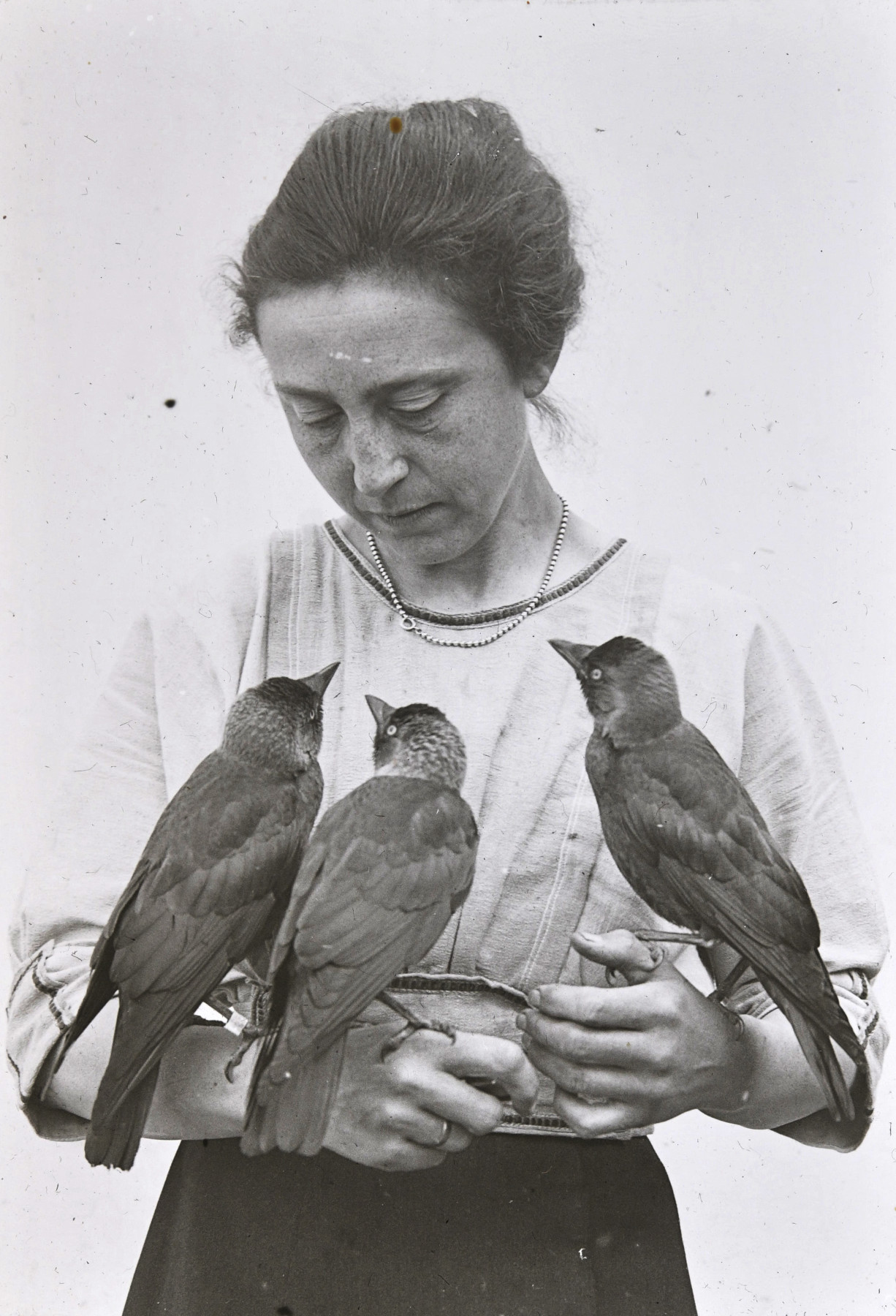FLAT // LAND & Magdalena Heinroth
April 26, 2024

Magdalena Heinroth (1883–1932) raised hundreds of native birds in the apartment she shared with her husband Oskar Heinroth at the Berlin Aquarium. These included the three jackdaws pictured here perched on her arms.
Magdalena studied taxidermy at the Natural History Museum in Berlin. After her marriage to Oskar, one of the founders of ETHOLOGY (the study of animal behaviour), she continued to raise and study birds, all the way from hatching to adulthood.
Their extensive research led to the publication of a four-volumes reference book on bird behaviour written by them, and to numerous important articles written by her. It also went on to influence modern ETHOLOGISTS such as Konrad Lorenz, who believed that by studying the social behaviour of birds like the jackdaws on Magdalena’s arms, we could learn more about the social behaviour of humans:
“Who knows how human morals with their drives and inhibitions would look if one could analyse them like the social drives and inhibitions of a jackdaw.”
JACKDAWS & ETHOLOGY:
Jackdaws belong to the crow family. They live in small groups with a complex social structure in farmland, open woodland, on coastal cliffs, and in urban settings. Like its relatives, jackdaws are intelligent birds, and have been observed using tools. An omnivorous and opportunistic feeder, it eats a wide variety of plant material and invertebrates, as well as food waste from urban areas.
In his book King Solomon’s Ring, published in 1954, Konrad Lorenz described and analysed the complex social interactions in a western jackdaw flock that lived around his house in Altenberg, Austria. He found that the birds have a linear hierarchical group structure, with higher-ranked individuals dominating lower-ranked birds, and pair-bonded birds sharing the same rank. According to Lorenz, the most significant factor in social behaviour was the immediate and intuitive grasp of the new hierarchy by each of the western jackdaws in the flock.
References:
Burkhardt, R. W., Jr. (2008). Dilemmas in the constitution of and exportation of ethological facts. Working Papers on the Nature of Evidence: How Well Do ‘Facts’ Travel?, 32(8), 1–24. https://eprints.lse.ac.uk/22502/1/3208Burkhardt.pdf
Heinroth, O., & Lorenz, K. (1988). Wozu aber hat das Vieh diesen Schnabel? Briefe aus der frühen Verhaltensforschung, 1930-1940. In O. Koenig (Ed.), (p. 42). Munich: Piper.